Your home building website isn’t ranking on Google? You’re not alone.
Many businesses face this issue. Having a website is only half the battle. To reach potential customers, it must appear on Google’s search results. The reasons for poor ranking can be complex. They range from poor SEO practices to slow page speeds.
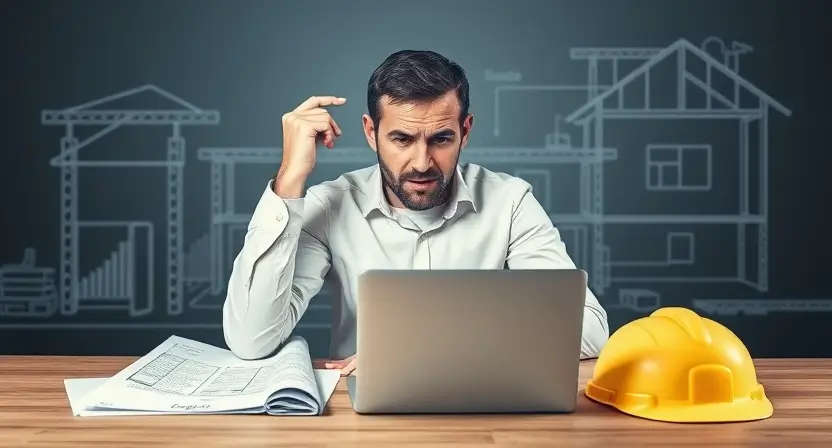
Understanding these factors is crucial. It’s not just about having a good website. It’s about making sure Google recognizes it as valuable. This blog will explore the common pitfalls. And provide insights to help improve your site’s ranking. Get ready to learn why your home building website isn’t getting the visibility it deserves. And what you can do to change that.
Common Seo Mistakes
Building a beautiful home building website isn’t enough. Without proper SEO, your site may not rank well on Google. Let’s explore common SEO mistakes that could be affecting your site’s visibility.
Ignoring Keywords
Many websites fail to use relevant keywords. Keywords are the words people type into search engines. They are the bridge between your content and your audience. If you ignore keywords, Google may not understand your content. This can hurt your ranking.
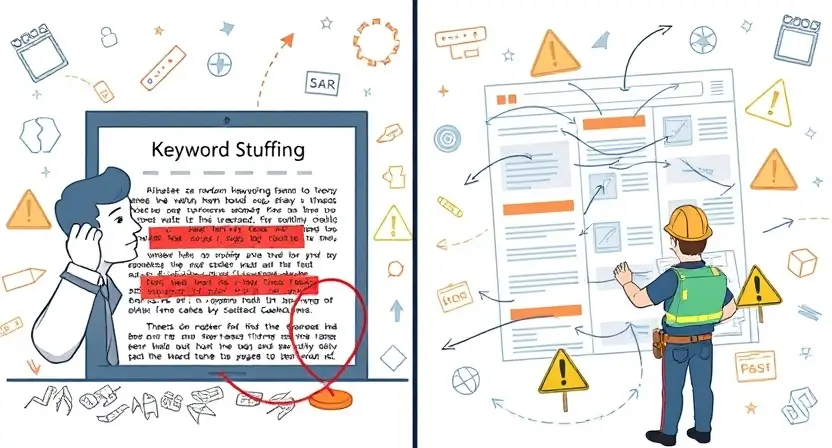
Research and use keywords related to home building seo. Think about what your customers might search for. Use these keywords in your titles, headings, and content. Avoid keyword stuffing. It can make your content hard to read and may hurt your ranking. Aim for a natural flow.
Poor Website Structure
Website structure matters for SEO. A well-organized site helps users and search engines find your content. If your site is messy, visitors might leave quickly. This increases your bounce rate and can lower your ranking.
Use clear, logical navigation. Make sure every page is easy to find. Include a sitemap. This helps search engines understand your site. Organize your content with headings and subheadings. This makes it easier to read and helps with SEO.
Content Quality Issues
Are you wondering why your home building website isn’t ranking on Google? One of the main reasons could be content quality issues. Google prioritizes high-quality content. If your website content is lacking, it can hurt your rankings. Let’s dive into some common content quality problems.
Thin Content
Thin content refers to pages with little or no valuable information. Google’s algorithms can recognize these pages and rank them lower. Here’s what to check for:
- Pages with less than 300 words
- Content that doesn’t answer user questions
- Overuse of keywords without context
To fix thin content, focus on providing detailed, useful information. Ensure each page offers value to your visitors.
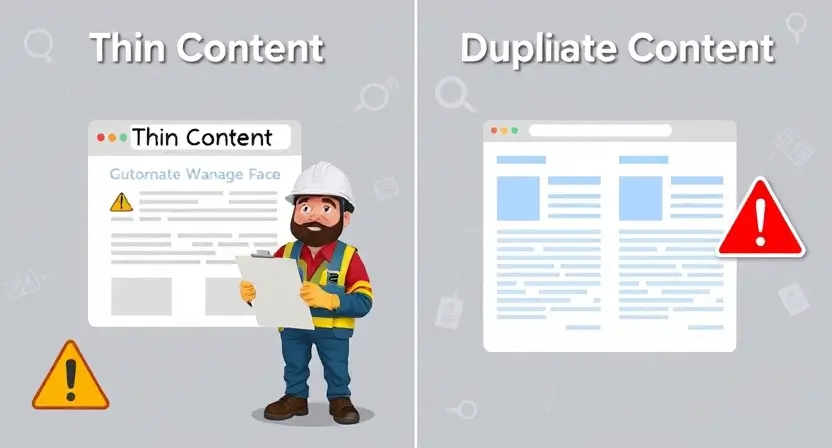
Duplicate Content
Duplicate content is content that appears on multiple pages within your site or on other sites. Google may not know which page to rank, hurting your SEO. Common sources of duplicate content include:
- Copied product descriptions
- Similar blog posts
- Reused service descriptions
To resolve duplicate content, use unique descriptions for each page. Also, consider using canonical tags to tell Google which version to prioritize.
Lack Of Mobile Optimization
Is your home building website not ranking on Google? One critical reason could be the lack of mobile optimization. In today’s digital world, having a mobile-optimized website is essential. If your site isn’t mobile-friendly, you might be losing out on valuable traffic.
Responsive Design
A responsive design ensures your website looks great on all devices. Whether it’s a phone, tablet, or desktop, your site adjusts its layout accordingly. This is important because Google prioritizes mobile-friendly sites. If your site doesn’t have a responsive design, it could hurt your ranking.
Mobile-friendly Navigation
Users need to navigate your site easily on mobile devices. If your navigation is not mobile-friendly, visitors might leave quickly. This increases your bounce rate, which can negatively impact your ranking. Ensure menus are easy to access and links are large enough to tap.
Slow Page Load Times
Slow page load times can significantly affect your home building website’s ranking on Google. A slow website frustrates users, leading to higher bounce rates. Google prioritizes user experience, so a slow website may not rank well. Let’s explore some common issues that cause slow page load times.
Large Image Files
Large image files can drastically slow down your website. High-resolution images take longer to load, affecting the overall speed. Consider using image compression tools to reduce file sizes. Formats like WebP can also help. Optimized images load faster, improving user experience and SEO.
| Image Format | Average File Size | Load Time |
|---|---|---|
| JPEG | 500 KB | 1.5 seconds |
| PNG | 800 KB | 2.2 seconds |
| WebP | 300 KB | 1.0 second |
Inefficient Code
Inefficient code can also slow down your site. Excessive use of JavaScript and CSS files can cause delays. Clean up your code to ensure it’s as efficient as possible. Minify CSS and JavaScript files to reduce load times. Remove unnecessary plugins and scripts. Streamlined code leads to faster page loads.
- Minify CSS and JavaScript files.
- Remove unused plugins.
- Use asynchronous loading for scripts.
By addressing these issues, you can improve your site’s load times. Faster websites offer a better user experience, leading to higher rankings on Google.
Weak Backlink Profile
Are you struggling to understand why your home building website isn’t ranking on Google? One major reason could be a weak backlink profile. Backlinks are links from other websites to your site. They are essential for SEO because they signal to search engines that your site is trustworthy and relevant. Let’s dive into some common issues with backlinks.
Few Quality Links
A common issue is having few quality links. Quality backlinks come from reputable and relevant websites. They help improve your site’s authority. If your website has only a few or no quality backlinks, search engines may not see it as trustworthy.
Here are some steps to gain quality backlinks:
- Create valuable content that others want to link to.
- Reach out to industry influencers for guest posts.
- Engage in community forums and provide useful answers.
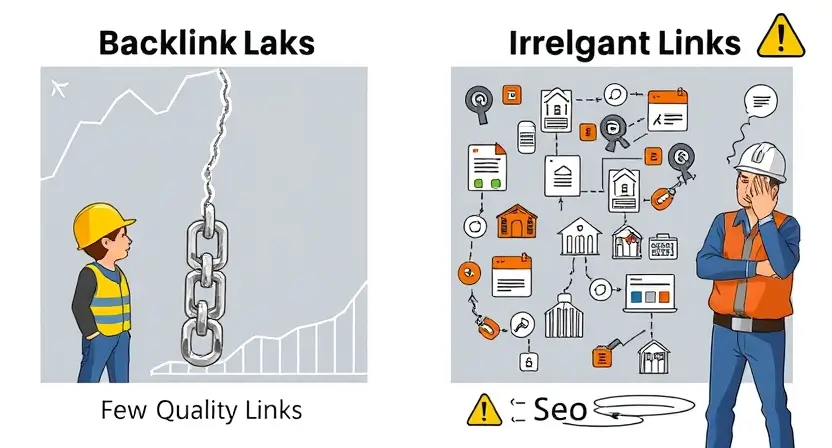
Irrelevant Links
Another issue is having irrelevant links. These are backlinks from websites that have no relation to your niche. For example, a backlink from a cooking blog to your home building website is irrelevant. Search engines may see this as spammy and untrustworthy.
Focus on getting backlinks from:
- Home improvement blogs.
- Construction industry sites.
- Local business directories.
These relevant links will improve your SEO and help your site rank better.
Remember, a strong backlink profile is key to improving your website’s ranking. Focus on quality and relevance for the best results.
Poor User Experience
A poor user experience can drive visitors away from your home building website. This affects your ranking on Google. User experience is crucial for retaining visitors and reducing bounce rates. If your website frustrates users, they’ll leave quickly. This sends negative signals to search engines. Let’s explore two common issues: confusing navigation and intrusive ads.
Confusing Navigation
Visitors should find information on your website easily. Confusing navigation can make this difficult. They may leave if they can’t find what they’re looking for quickly. Here are some common navigation issues:
- Too many menu items
- Unclear labels
- Hidden menus
- Non-intuitive layout
Ensure your navigation is simple and intuitive. Use clear labels and a logical structure. Help users find what they need without frustration. This improves their experience and keeps them on your site longer.
Intrusive Ads
Intrusive ads can ruin the user experience. They distract and annoy visitors. Pop-up ads, auto-playing videos, and large banners are common culprits. They can slow down your site and make it hard to read content.
Here’s how to minimize the negative impact of ads:
- Limit the number of ads per page
- Avoid auto-playing videos
- Use non-intrusive ad formats
- Ensure ads don’t cover essential content
By reducing intrusive ads, you create a better user experience. This can lead to higher engagement and better rankings on Google.
Neglecting Local Seo
Neglecting Local SEO can significantly impact your home building website’s visibility on Google. Local SEO ensures that your business appears in local searches, which is crucial for attracting nearby clients. Not focusing on local SEO means missing out on a vital pool of potential customers.
Incomplete Google My Business
An incomplete Google My Business (GMB) profile is a common oversight. GMB is essential for local SEO. Ensure your profile is fully filled out with accurate business details.
- Include your business name, address, and phone number.
- Add your business hours and a brief description.
- Upload high-quality images of your work.
- Encourage satisfied customers to leave positive reviews.
Completing your GMB profile helps Google understand your business better. This boosts your chances of appearing in local search results.
Lack Of Local Keywords
Local keywords are terms that include a location. They are crucial for local SEO. Without them, your website may not show up in local searches.
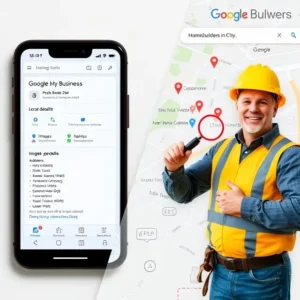
Research and use local keywords related to your services. For instance:
- “home builders in [Your City]”
- “custom homes [Your City]”
- “residential construction [Your City]”
Include these keywords in:
- Page titles
- Meta descriptions
- Headings
- Content
This practice will help Google match your site with local search queries. It increases your chances of ranking higher in local searches.
Ignoring Analytics
Ignoring Analytics is a common mistake that can affect your website’s ranking. Analytics give you insights into your website’s performance. Without them, you are flying blind. You won’t know what works and what needs fixing. This can lead to poor user experience and low search engine rankings.
No Performance Tracking
Not tracking your website’s performance can hurt your rankings. You need to know how your site is doing. This includes the number of visitors, page views, and bounce rate. Without this data, you can’t make informed decisions. Here are some key metrics to track:
- Visitors: How many people visit your site
- Page Views: How many pages they look at
- Bounce Rate: How many leave after viewing one page
Use tools like Google Analytics to track these metrics. Regularly review this data. Make changes based on what you learn. This will help improve your website’s performance and ranking.
Ignoring User Behavior
Understanding user behavior is crucial for improving your website. If you ignore it, your site may not meet visitors’ needs. This can lead to high bounce rates and low rankings. To understand user behavior, you need to track:
- Which pages they visit
- How long they stay on each page
- What actions they take (clicks, form submissions)
Tools like Hotjar and Crazy Egg can help you track user behavior. Use heatmaps and session recordings. These tools show where users click and how they navigate your site. Adjust your website based on this data. Make it easier for users to find what they need. This will improve their experience and boost your rankings.
Frequently Asked Questions
Why Isn’t My Home Building Site Ranking?
Your site might not be ranking due to poor SEO practices, lack of relevant keywords, slow loading speeds, or low-quality content. Ensure your website is mobile-friendly and has high-quality backlinks.
How Can I Improve My Website’s Seo?
To improve SEO, use relevant keywords, optimize meta tags, improve site speed, and ensure mobile-friendliness. Regularly update your content and build high-quality backlinks.
What Role Do Keywords Play In Ranking?
Keywords help search engines understand your content. Use relevant keywords in your titles, headers, and content. Avoid keyword stuffing to maintain readability and SEO effectiveness.
Why Is Site Speed Important For Ranking?
Site speed impacts user experience and SEO. Slow-loading sites can lead to higher bounce rates. Optimize images, use caching, and consider a faster hosting solution to improve speed.
Conclusion
To improve your home building website’s ranking, focus on quality content. Use relevant keywords naturally. Optimize images and ensure fast loading times. Prioritize mobile-friendly design. Build credible backlinks and engage with your audience. Regularly update your content to stay current.
Always monitor your SEO efforts and adapt as needed. These steps can help your site perform better on Google. Remember, consistent effort leads to improvement. Keep refining your strategy for the best results.

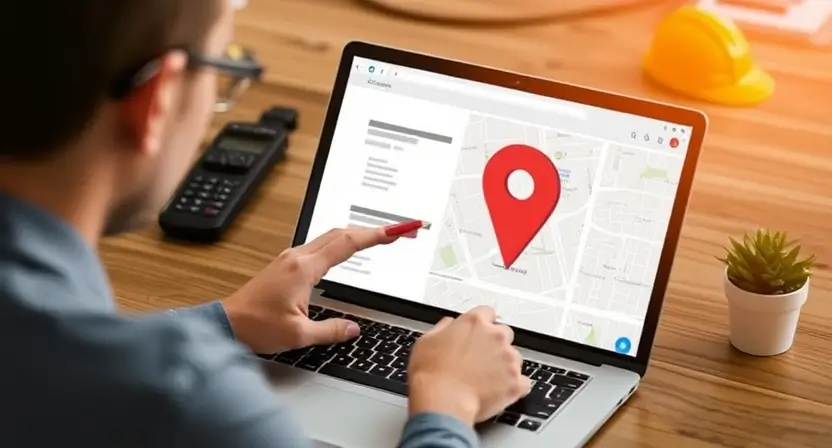

Pingback: How Local SEO Can Drive More Leads for Home Builders
Pingback: How to Keyword Research for Home Builders
Pingback: How can blogging effectively generate leads for home builders?